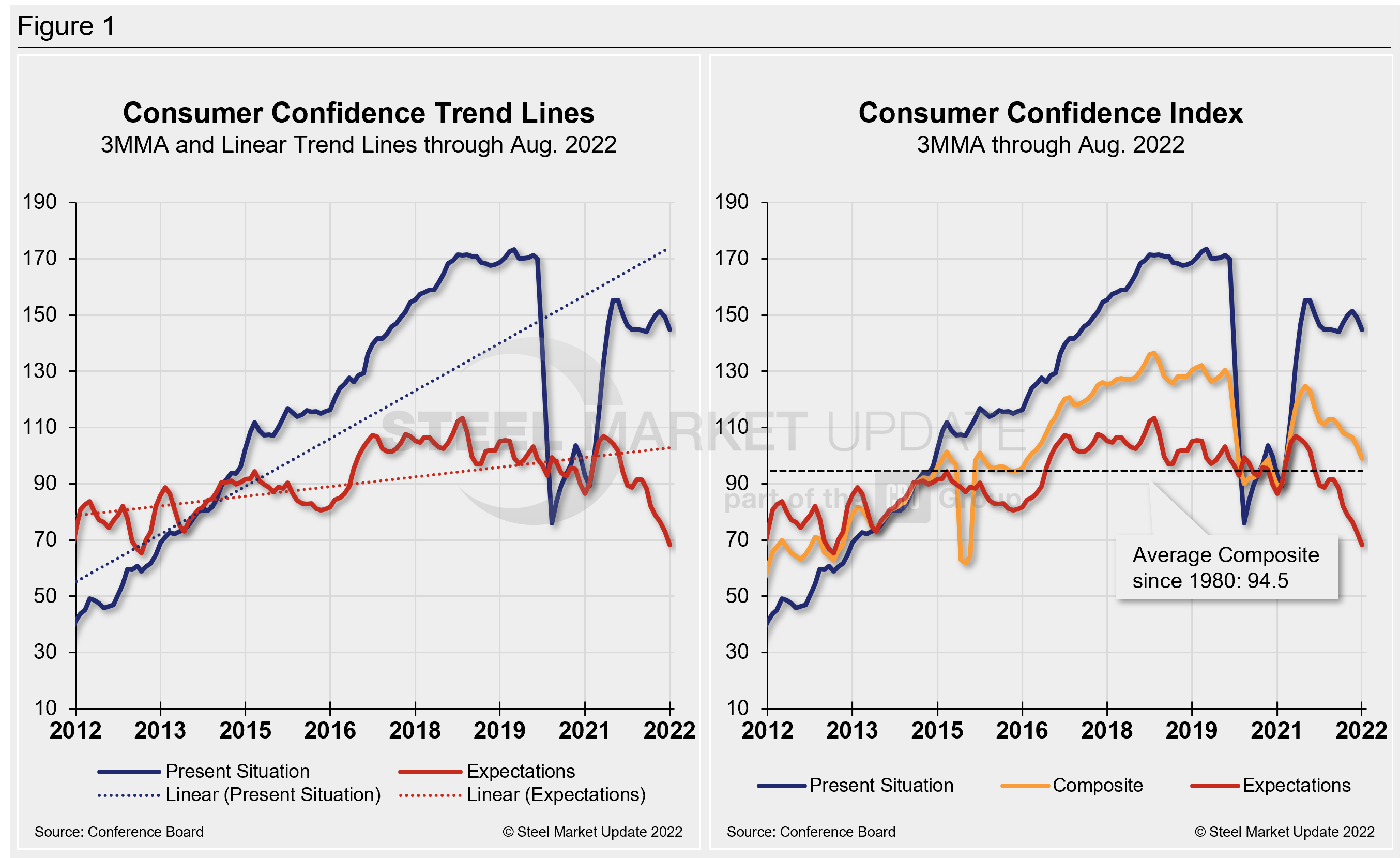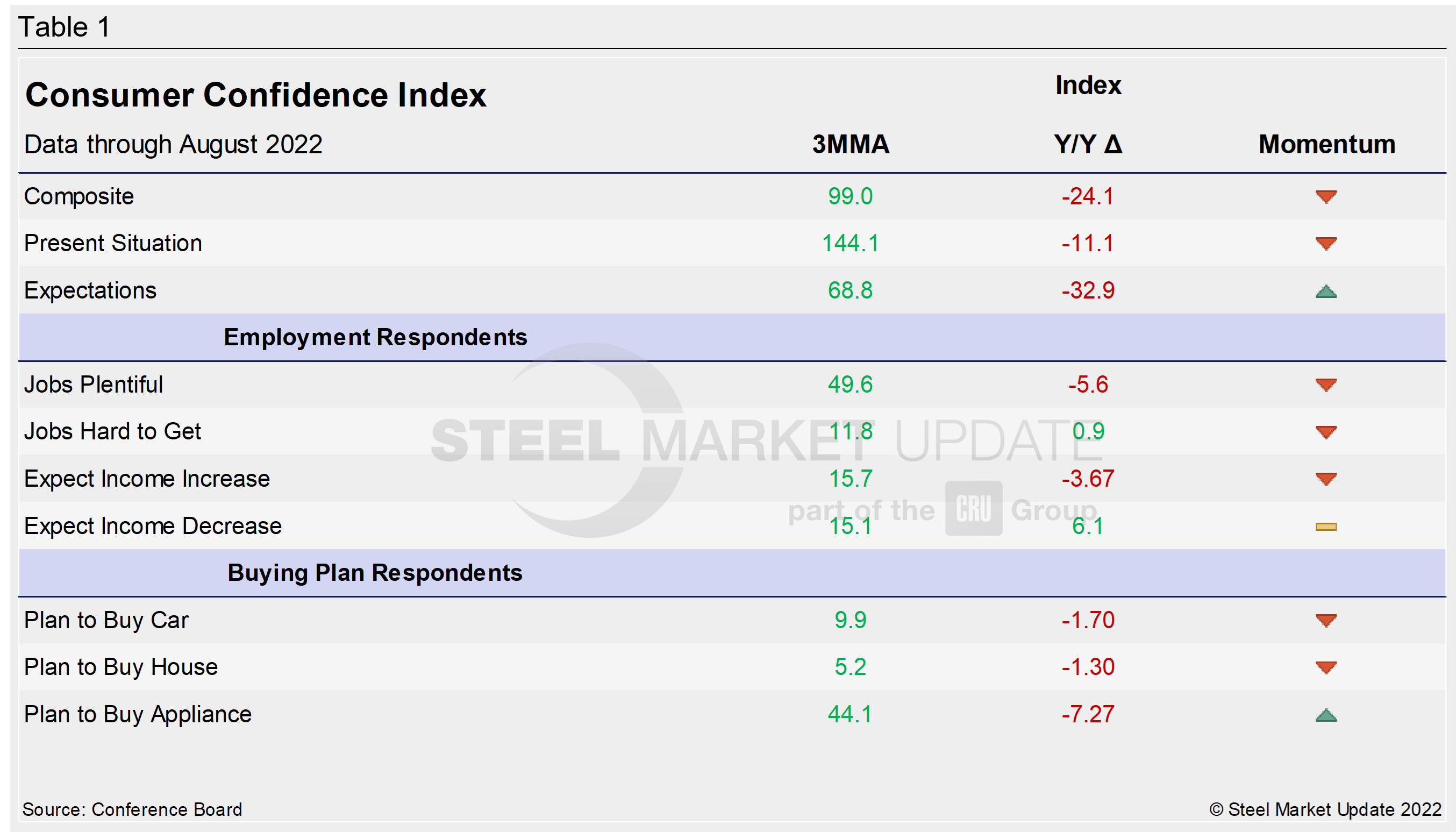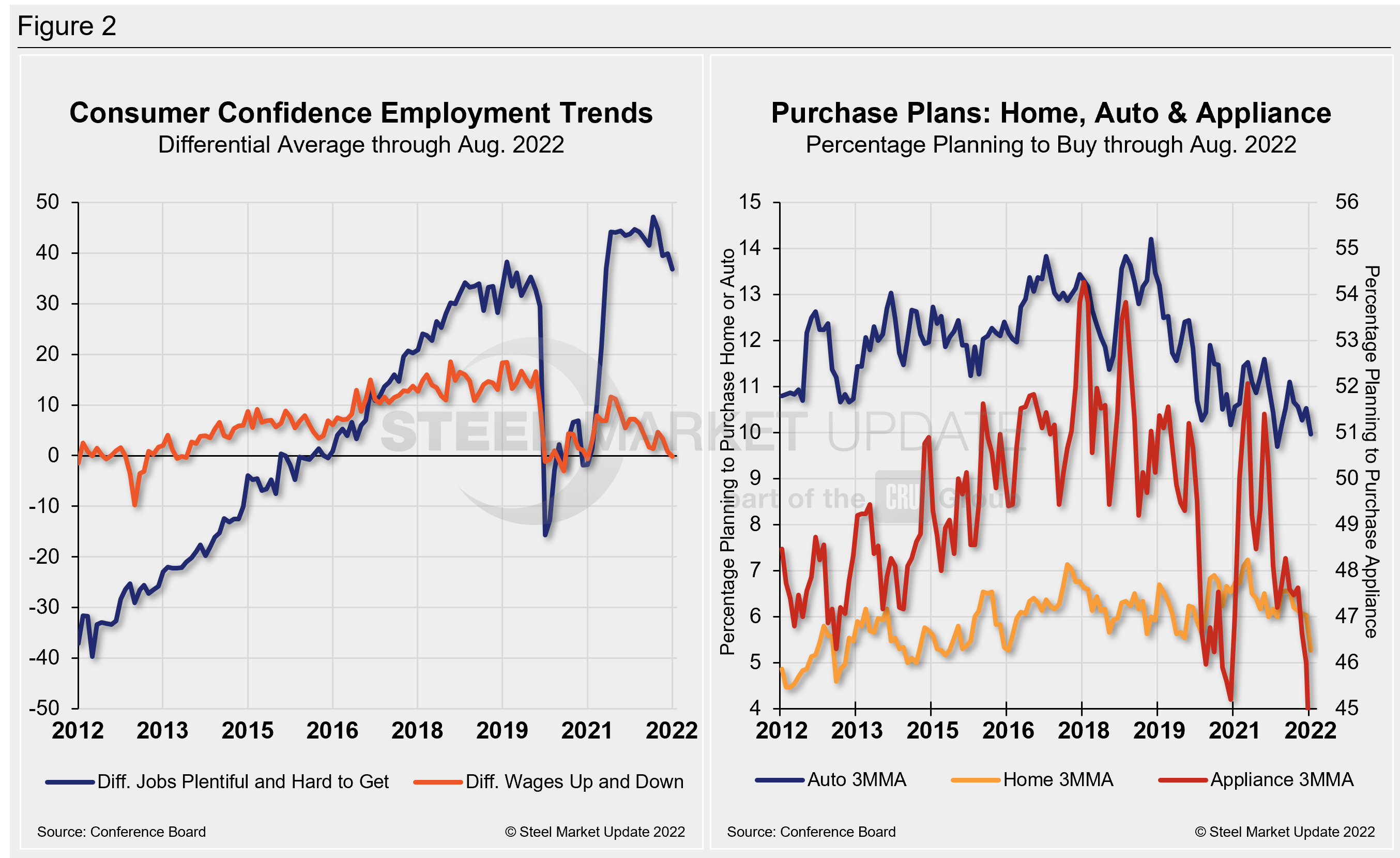Economy

Consumer Confidence Surprises, Recovers in August
Written by David Schollaert
September 1, 2022
US consumer confidence grew in August, rebounding more than expected after shrinking for three straight months, The Conference Board reported.
Results in August were better than expected, measuring 103.2 points and ahead of the 97.7 estimates. The nice month-on-month (MoM) bump in consumer confidence runs parallel to the lower oil prices and is congruent with the Michigan consumer sentiment data as well.
Americans became more optimistic about the US economy over the past 30 days, with the latest survey showing vacation intentions rising to an eight-month high, a potential positive signal for consumer spending.
“Consumer confidence increased in August after falling for three straight months,” said Lynn Franco, senior director of economic indicators at The Conference Board. “The Present Situation Index recorded a gain for the first time since March. The Expectations Index likewise improved from July’s 9-year low, but remains below a reading of 80, suggesting recession risks continue. Concerns about inflation continued their retreat but remained elevated.”
The headline index rose by 7.9 points in August to a reading of 103.2. July’s revised reading of 95.3, is the lowest index reading since February 2021, when levels were 95.2, according to the report.
Consumers’ expectations for the next six months rose, but they remain at a level that suggests recession risks persist. Inflation continues to weigh heavily on consumer outlook.
“Meanwhile, purchasing intentions increased after a July pullback, and vacation intentions reached an 8-month high,” said Franco. “Looking ahead, August’s improvement in confidence may help support spending, but inflation and additional rate hikes still pose risks to economic growth in the short term.”
Calculated as a three-month moving average (3MMA) to smooth out volatility, The Conference Board’s Composite Index was 99.0 in August, unchanged versus July. The figure has held for the first time after declining for seven straight months prior, falling further from a pre-pandemic high of 130.4 in February 2020.
The Composite Index is made up of two sub-indexes: consumers’ view of the present situation and their expectations for the future. Figure 1 below notes the 3MMA linear trend lines from January 2012 through August 2022 versus the trend lines of all three subcomponents of the index: Present Situation, Composite, and Future Expectations. All three were above the average composite line prior to the pandemic before falling consecutively through February 2021. The surge from March through June of 2021 pulled all three indexes above the composite line once again. But economic uncertainty has since really eroded confidence and expectations.

The table below compares August 2022 with August 2021 on a 3MMA basis. The headline index and its two sub-indexes are all declining on a year-on-year (YoY) basis. Present situation has seen a less aggressive fall, but all three are down by double-digits, with expectations showing the most volatility over the same period. The composite and present situation are also showing declining momentum through July.
When compared to the same 2019 pre-pandemic period, the Composite index is down 32.5 points on a 3MMA basis. The Present Situation is down 26.3 points, while the Expectations reading is down 25 points in July when compared to the same period in 2019. The consumer confidence report includes employment data and purchase plans. These are summarized in the table below.

People found jobs less plentiful in August and were a less optimistic about wage increases compared to the month prior. The differential between those finding jobs and those having difficulty was 36.6 in August, down from 36.8 in July. The measure, despite recent fluctuation, is not too far below the most recent pre-pandemic high but below 44.1 a year ago. The difference between those expecting wages to rise versus those expecting wages to fall is 1.3, up 1.5 points MoM, but down from the recent high of 11.6 last June.
Buying intentions for big-ticket items – cars, homes, and major appliances – were all up in August, the report said. Rising costs remain the top concern for consumers, though, a position that is likely to continue, as there are concerns the Fed could raise its benchmark rate again.
Home buying saw the largest percentage increase in August, up 20%, followed by major appliances (+9.9%), and autos (+1.1%). These recent dynamics and historical movements are illustrated below in Figure 2.

Note: The Conference Board is a global, independent business membership and research association working in the public interest. The monthly Consumer Confidence Survey®, based on a probability-design random sample, is conducted for The Conference Board by Nielsen. The index is based on 1985 = 100. The composite value of consumer confidence combines the view of the present situation and of expectations for the next six months.
By David Schollaert, David@SteelMarketUpdate.com

David Schollaert
Read more from David SchollaertLatest in Economy

Steel groups welcome passage of budget bill
Steel trade groups praised the passage of the Big Beautiful Bill (BBB) in Congress on Thursday.

Industry groups praise Senate for passing tax and budget bill
The Steel Manufacturers Association and the American Iron and Steel Institute applauded the tax provisions included in the Senate's tax and budget reconciliation bill.

Chicago PMI dips 0.1 points in June
The Chicago Purchasing Managers Index (PMI) slipped 0.1 points to 40.4 points, in June.

Multi-family pullback drives housing starts to 5-year low in May
US housing starts tumbled in May to a five-year low, according to figures recently released by the US Census Bureau.

Architecture firms still struggling, ABI data shows
Architecture firms reported a modest improvement in billings through May, yet business conditions remained soft, according to the latest Architecture Billings Index (ABI) release from the American Institute of Architects (AIA) and Deltek.
